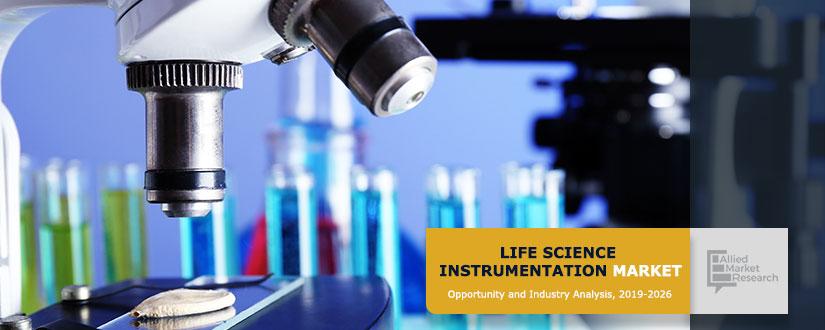The life science also referred as biological sciences includes the branches of science that mainlyinvolve the scientific study of life and the organisms such as plants, microorganisms, and animals including human beings. It is one of the two major branches of natural science.Life sciences focus on aspects common to all or many life forms, such as anatomy and genetics. Furthermore, the micro scale is also an important aspect in the Life Sciences such as,molecular biology, biochemistry, and additionally, it can also be extended on larger scales such as cytology, ethology, immunology,pharmacy, ecology. Life science is a broader term and can be used in the identification of various parameters to help in the development of new products, which can assist in the wellbeing of human beings, and other living organisms.
COVID-19 scenarioanalysis:
Coronavirus disease 2019 (COVID-19) is pandemic which has created a havoc for all the communities throughout the globe.Furthermore, the rise in the cases of coronavirus-2 lead the government to enforce the lockout of every part of the region, causing the decline in the revenue generated.The Covid-19 pandemic has an adverse impact on the healthcare system, which is causing about 50% to 70% drop in revenue from March and hence affecting every individual. There are many small hospitals, clinics and nursing homes, which have been declared to shut their operations, due to which the surgical procedures have also decreased.However, visa cancellations have led to a reduction in medical tourism and can adversely impact the healthcare services market growth.
Top impacting factors: Market Scenario Analysis, Trends, Drivers and Impact Analysis
The key factors which are anticipated to boost the market include, rise in the expenditure on the R&D by biotechnology and pharmaceutical companies. Additionally, increase in public and private funding for the life science research and surge in the incidences of the target diseases and the genetic disorders would help the market propel in the industry in the near future. The rise in demand for the analytical instruments is anticipated to help the market grow in the forecast period. However, the dearth in the skilled professionals may impede the market growth in the next few years.
Rise in incidences of diseases to assist in its management to flourish the market
The growth in the number of incidences of the diseases which needs life science instruments for the management of the same would help the market boost in the coming years.According to the estimations given by the World Health Organization in 2018, cancer is projected to be the second leading cause of death globally, which leads to 9.6 million deaths. Furthermore, about 1 in every 6 deaths is due to cancer. The R&D for this disease would boost the industry of Life Science Instrumentation in the forecast period.
In addition, according to the International Diabetic Federation in 2019, around 463 million adults (20-79 years) are estimated to be living with diabetes and furthermore, by 2045 this will rise to approximately700 million. The quantity of people with type 2 diabetes is increasing in most countries.
Surge in mergers and acquisitions to boost the market
The increase in the mergers and acquisition would help the market players to show their presence worldwide in order to gain attention to the industry and hence, help the market propel in the forecast period. For instance, in October 2019, Danaher Corporation announced that it signed an agreement in order to sell its label-free biomolecular characterization, chromatography hardware and resins, and micro carriers and particle validation standards businesses to another key industrialist, Sartorius AG for approximately $750 million. The total revenue of the businesses, which are part of Danaher's Life Sciences segment, was estimated to be about$140 million in 2018.
Furthermore, in November 2017, Shimadzu Corporation, Fujitsu Limited, and Fujitsu Laboratories Ltd. had declared that they are undertaking collaborative researchin order to develop technology. It had announced that it will utilize AI (artificial intelligence) to process the vast amounts of data used in analyzing the measurement results, which are essential to analytical processes, acquired from Shimadzu mass spectrometers.
Key benefits of the report:
- This study presents the analytical depiction of the global life science instrumentation industry along with the current trends and future estimations to determine the imminent investment pockets.
- The report presents information related to key drivers, restraints, and opportunities along with detailed analysis of the global Life Science Instrumentation market share.
- The current market is quantitatively analyzed to highlight the global Life Science Instrumentation market growth scenario.
- Porter’s five forces analysis illustrates the potency of buyers & suppliers in theLife Science Instrumentation market.
- The report provides a detailed global Life Science Instrumentation market analysis based on competitive intensity and how the competition will take shape in coming years.
Questions answered in the life science instrumentation market research report:
- Which are the leading market players active in the life science instrumentation market?
- What current trends will influence the market in the next few years?
- What are the driving factors, restraints, and opportunities in the market?
- What are the projections for the future that would help in tasking further strategic steps?
Life Science Instrumentation Market Report Highlights
| Aspects | Details |
| By Product |
|
| By End User |
|
| By Region |
|
| Key Market Players | Bio-Rad Laboratories, Inc.,, Eppendorf AG,, Horiba,, Hitachi High-Technologies Corporation,, Merck KGaA,, PerkinElmer, Inc.,, Becton, Dickinson and Company,, Thermo Fisher Scientific, Inc.,, Qiagen N.V.,, Agilent Technologies, |
Loading Table Of Content...




